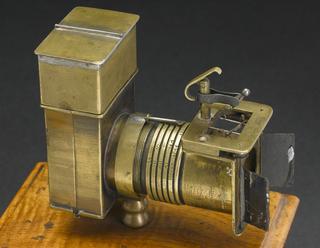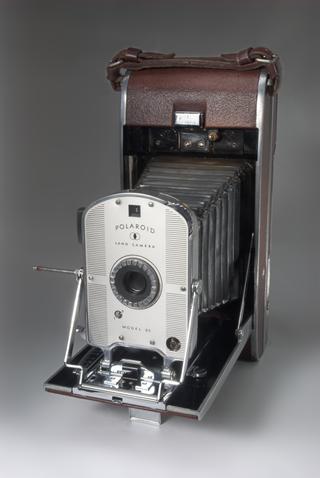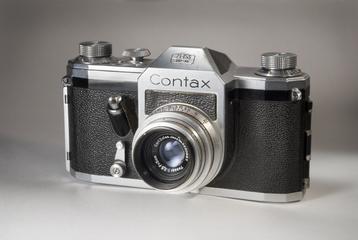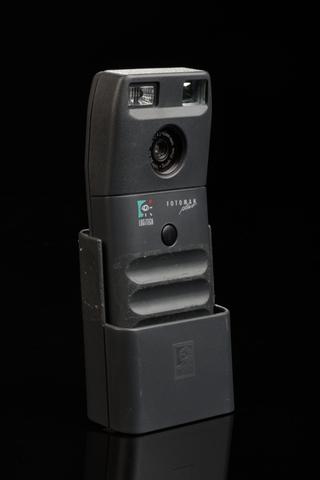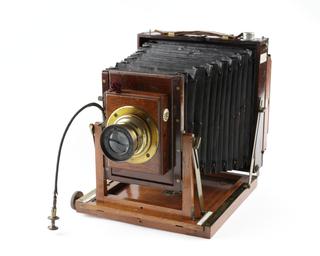
Houghton 'Triple Victo' Half-Plate Camera
- Made:
- 1908-1915 in United Kingdom
- maker:
- Houghtons Limited








"Triple Victo" half-plate field camera by Houghtons, fited with a Thornton-Pickard shutter, and lens made by R. & J. Beck, and two plate holders.
This is a Houghton “Triple Victo” field camera, a foldable plate camera from around 1900.
George Houghton and Son was a major London camera manufacturer of the 19th and 20th centuries. The Triple Victo camera was launched around 1899, well made, but intended as a low cost field camera for the amateur, costing £3 and 15 shillings – cheaper than Houghton’s other field cameras. Adverts declared it to be, “an example of good camera making at a really reaonable price.”
It could be folded up for transport and was intended to be used on a tripod. Exposues were taken onto a glass plate coated in light sensitive chemcials, which was developed to produce the final photograph. “Triple” refers to the fact that the bellows can be extended three times further than a typical field camera to allow better close up photography of distant objects, almost like a zoom lens.
Like many early cameras, this Triple Victo has parts from other manufacturers. The lens is by the London based optical company R & J Beck, and is fitted with a roller-blind shutter manufactured by Thornon-Pickard, a Manchester camera firm.
Details
- Category:
- Photographic Technology
- Object Number:
- Y1989.341.2
- Materials:
- wood (unidentified), brass (copper, zinc alloy), glass, leather and velvet
- Measurements:
-
holders (combined): 38 mm x 215 mm x 152 mm,
camera (collapsed): 132 mm x 240 mm x 218 mm,
- type:
- camera
- credit:
- Purchased From Christie's
